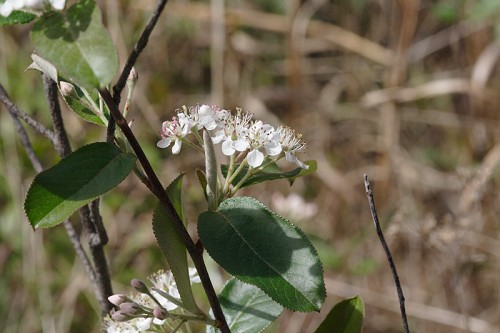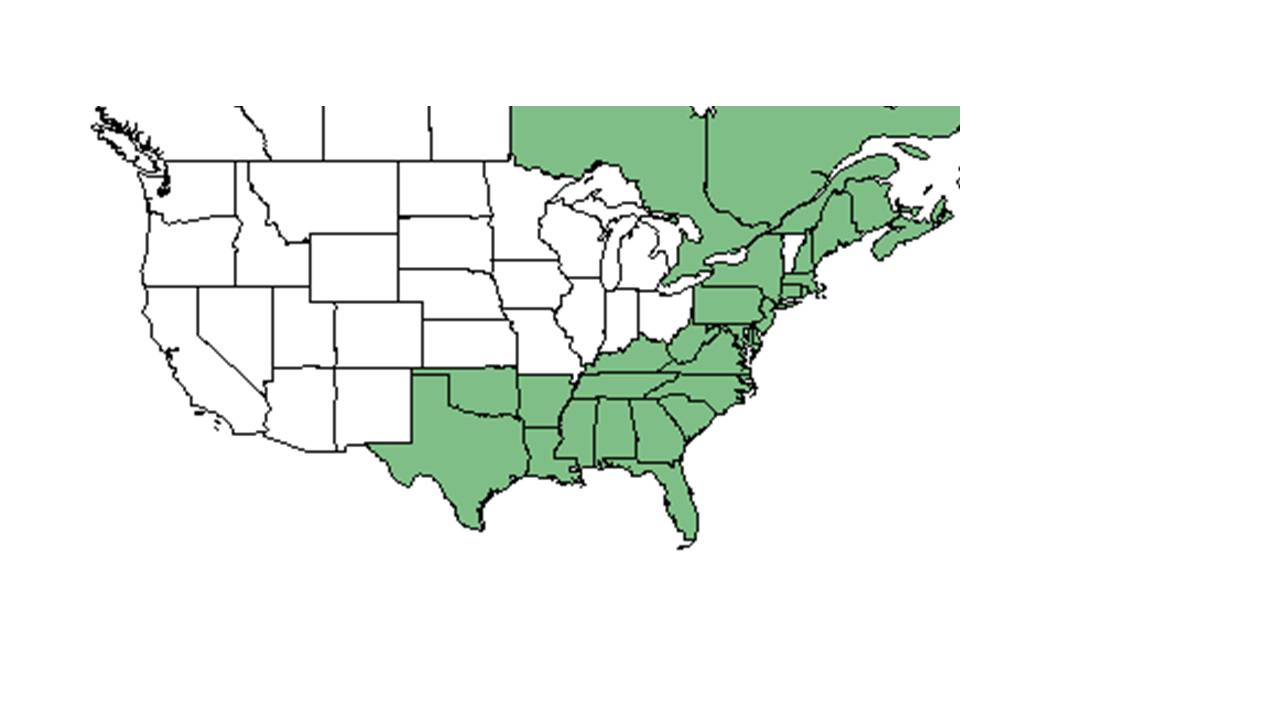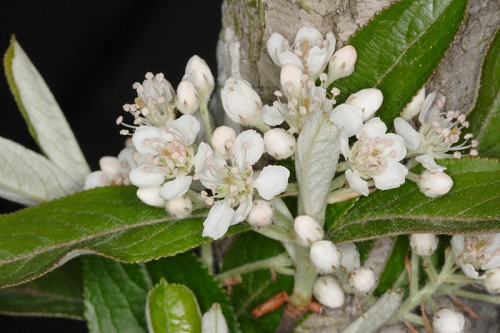Difference between revisions of "Aronia arbutifolia"
(→Conservation and Management) |
Krobertson (talk | contribs) |
||
| Line 40: | Line 40: | ||
<!--===Seed bank and germination===--> | <!--===Seed bank and germination===--> | ||
===Fire ecology===<!--Fire tolerance, fire dependence, adaptive fire responses--> | ===Fire ecology===<!--Fire tolerance, fire dependence, adaptive fire responses--> | ||
| − | ''A. arbutifolia'' has been documented in wet pinewoods of a one year unburned old growth longleaf pine stand<ref name="FSU"></ref> | + | ''A. arbutifolia'' has been documented in wet pinewoods of a one year unburned old growth longleaf pine stand.<ref name="FSU"></ref> |
<!--===Pollination=== --> | <!--===Pollination=== --> | ||
<!--===Use by animals===--><!--Herbivory, granivory, insect hosting, etc.--> | <!--===Use by animals===--><!--Herbivory, granivory, insect hosting, etc.--> | ||
<!--===Diseases and parasites===--> | <!--===Diseases and parasites===--> | ||
| + | |||
==Conservation and management== | ==Conservation and management== | ||
Revision as of 15:44, 10 August 2016
Common name: Red chokeberry
| Aronia arbutifolia | |
|---|---|

| |
| Photinia pyrifolia shown is a synonym of Aronia arbutifolia Photo by John R. Gwaltney, Southeastern Flora.com | |
| Scientific classification | |
| Kingdom: | Plantae |
| Division: | Magnoliophyta - Flowering plants |
| Class: | Magnoliopsida – Dicotyledons |
| Order: | Rosales |
| Family: | Rosaceae |
| Genus: | Aronia |
| Species: | A. arbutifolia |
| Binomial name | |
| Aronia arbutifolia (L.) Pers. | |

| |
| Natural range of Aronia arbutifolia from USDA NRCS Plants Database. | |
Contents
Taxonomic notes
Synonyms: Pyrus arbutifolia (Linnaeus) Linnaeus f.; Photinia pyrifolia (Lamarck) K. Robertson & J.B. Phipps; Sorbus arbutifolia (Linnaeus) Heynhold var. arbutifolia
Description
Distribution
Ecology
Habitat
Habitats of A. arbutifolia include boggy pine flatwoods, titi bogs, shrub bog, bays, margins of bays, cypress swamp pond, swampy woodlands, borders of titi swamp, wet prairie, low palmetto flatwoods, cabbage palm hammock, dry sandy soil of high pineland, mixed hardwoods, longleaf pine rolling terrain, and swampy areas along rivers and creeks[1].
Associated species include Ilex myrtifolia, Ilex coriacea, Cliftonia monophylla, Cyrilla racemiflora, Persea palustris, Myrica cerifera, Lyonia lucida, Smilax laurifolia, Aster spinulosus, Cuphea aspera, Sabal palmetto, Quercus virginiana, Magnolia virginiana, Solidago fistulosa, Pinus palustris and Thelypteris palustris[1].
Areas have been observed as wet and boggy with loamy sand, wet soil and dry sandy soil[1].
Associated species include saw palmetto, Ilex myrtifolia, I. coriacea, Cliftonia monophylla, Persea palustris, Myrica cerifera, Lyonia lucida, Aronia arbutifolia, Cyrilla racemiflora, Smilax laurifolia;\, titi; wiregrass, pines, Aster spinulosus, Cuphea aspera, Sabal palmetto, Quercus virginiana, Magnolia virginiana, Solidago fistulosa, and Thelypteris palustris, Pinus palutris and others[1].
Phenology
Observed blooming period February through April and fruiting March through December[1].
Fire ecology
A. arbutifolia has been documented in wet pinewoods of a one year unburned old growth longleaf pine stand.[1]
Conservation and management
Cultivation and restoration
Photo Gallery
Flowers of Photinia pyrifolia shown, a synonym of Aronia arbutifolia Photo by John R. Gwaltney, Southeastern Flora.com
References and notes
- ↑ 1.0 1.1 1.2 1.3 1.4 1.5 Florida State University Robert K. Godfrey Herbarium database. URL: http://herbarium.bio.fsu.edu. Last accessed: July 2015. Collectors: Loran C. Anderson, Robert K. Godfrey, Robert Kral, S.W. Leonard, A. G. Shuey, Bruce Hansen, JoAnn Hansen, John B. Nelson, Gary R. Knight, Mark A Garland, Elmer C. Prichard, George R. Cooley, Joseph Monachino, R. Komarek, R.A. Norris, Rodie White, H.L. Stoddard, Roomie Wilson. States and Counties: Florida: Columbia, Dixie, Franklin, Gadsden, Gulf, Hamilton, Holmes, Jackson, Jefferson, Lafayette, Lake, Leon, Liberty, Madison, Marion, Okaloosa, Pasco, Santa Rosa, Taylor, Walton, Wakulla, Volusia. Georgia: Grady, Thomas. Compiled by Tall Timbers Research Station and Land Conservancy.
